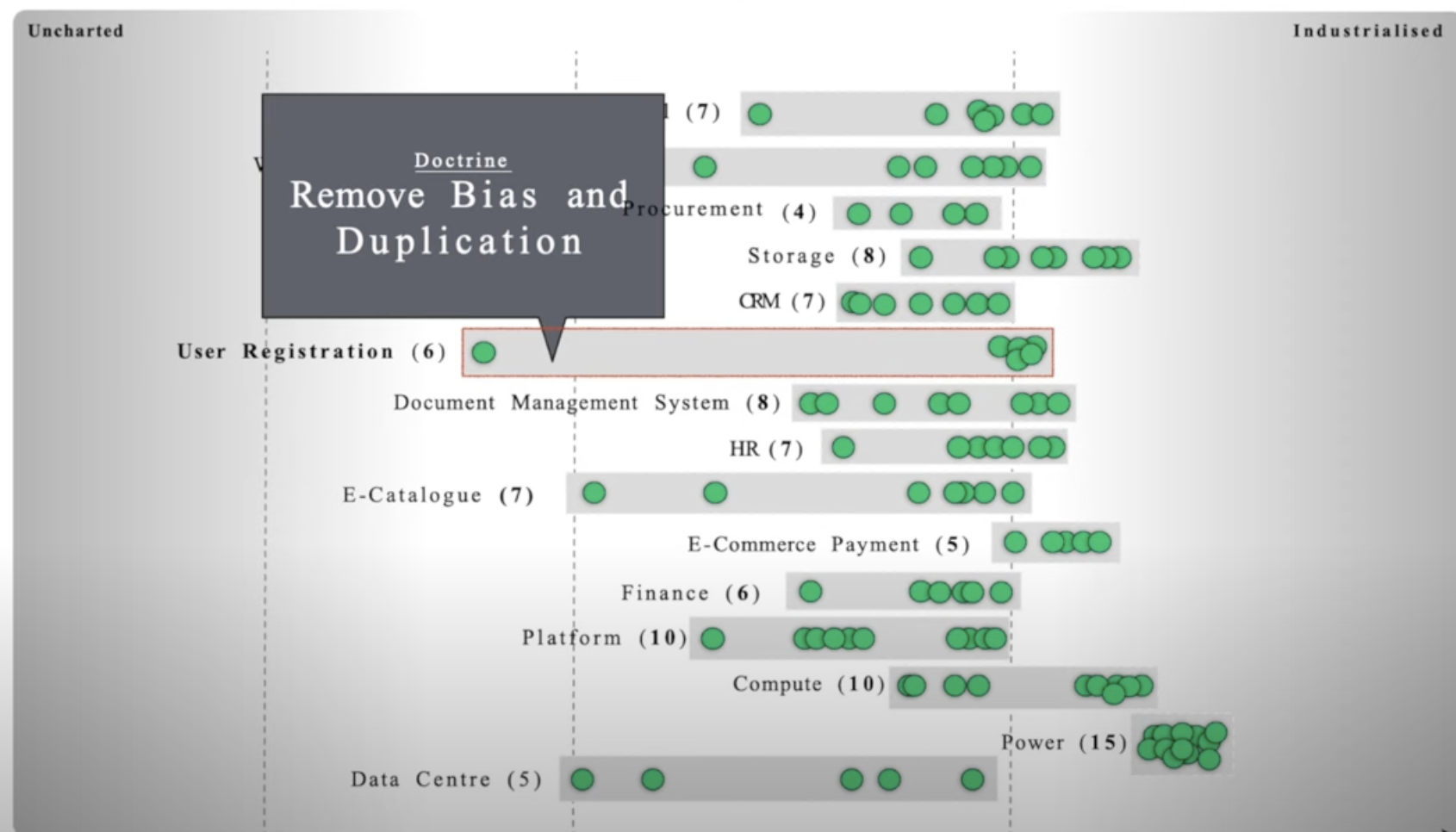About Wardley Maps
Wardley Maps Main entry point by Simon Wardley - https://medium.com/wardleymaps/on-being-lost-2ef5f05eb1ec
An easy way to start mapping is https://www.onlinewardleymaps.com/
- Video - An introduction to Wardley Mapping
- Video - Strategy Mapping Session with Simon Wardley
- Great lightweight intro to Wardley Mapping
- Video on System of Theft - Pioneers, Settlers, Townplanners
About maps
- Space has a meaning
- You have an anchor (e.g. like where is north)
- (e.g. a systems overview is not a map but a diagram)
- „Maps“ in business are mainly not a map but a diagram
- Anchor: can be the customer
- Start with the customer and create a chain of needs for that customer down to the low level system components
- https://list.wardleymaps.com/
Main Steps
- The purpose - the moral comparative
- Understand the landscape you’re competing in
- Climate patterns - so how the landscape is changing
- Understand doctrine and principles of organization. Doctrine: universally applicable principles regardless of context .. around 40
- Manage the evolutionary flow before you manage the process flow
- How are the users, what are there needs (components) and how evolved are these components Source
- characteristics change with evolution of components
- a huge difference between being agile (using proper approach to stay flexible) and using agile (Kanban, Scrum, XP,…)
- pre mortem - create a map of the current status and challenge
- post mortem - learn what happened using the map
- patterns
- climatic patterns - you can’t control but are useful for predictxion
- doctrine - universally useful patterns
- gameplay - more context specific patters
Climatic patterns
- for anticipation where the market is going
- everything evolves if there is supply and demand competition
- resulting in inertia based on past success
- co evolution of practice
- so new practices develop and other get outdated (e.g. Mean Time to Recovery decreased and e.g. enabled Mircoservices to evolve; DevOps)
- efficiency enables innovation and new areas of value will be created
- strategy is iterative
- 3 forces - efficiency, speed and new value
Doctrine and Gameplay
- you have a choice over
- doctrine - universally useful
- gameplay - very context specific
Doctrine
About 40 doctrines
-
focus on who are the users
- then focus on the needs of these users
- then **know the details **of these needs
- then understand how evolved these components are
- this** establishes a common language** and you can start to challenge assumptions
- this brings you to using appropriate methods
With different maps, you can then find maps common to all maps. Based on that:
- Remove Bias and Duplication

A bias towards using data is also a universally useful pattern. And maps provide us with data too.
Gameplay
About 100 different forms. Example: Innovate - Leverage - Commoditize
- take a product and turn into utility and expose as API
- enable other to build on top of that API (and they will build a lot of things of top of it)
- you can learn from what is useful and you can mine these ideas and derived next services from that you can build products on and later commoditize
- so this ways others innovate for you and you gain research and development from the outside

Leverage ecosystem to learn about usage. Efficiency increases with the size of the ecosystem. You can innovate more.
📖 Reaching Cloud Velocity with a whole chapter of mapping
Deep Dive
The Innovators Dilemma: When New Technologies Cause Great Firms to Fail
- https://amzn.to/30vHMgh
- https://www.blinkist.com/de/nc/browse/books/the-innovators-dilemma-en?r=1&st=the+innovators
The Innovator’s Solution: Creating and Sustaining Successful Growth https://amzn.to/2l7yvsJ
- OODA Loops Knowledge
- [[Deciphering Sun Tzu]]
Some further resources
An export from a Miro board and a backup/restore format is attached below too.
- [[Wardley Maps - Template.rtb |Miro Board Backup]]
Linking
- Book Club - Future Organization Playbook - 3rd Session - Innovation Architecture
- Systems Thinking
- Tools for Wardley Mapping
- AWS course on Warley mapping